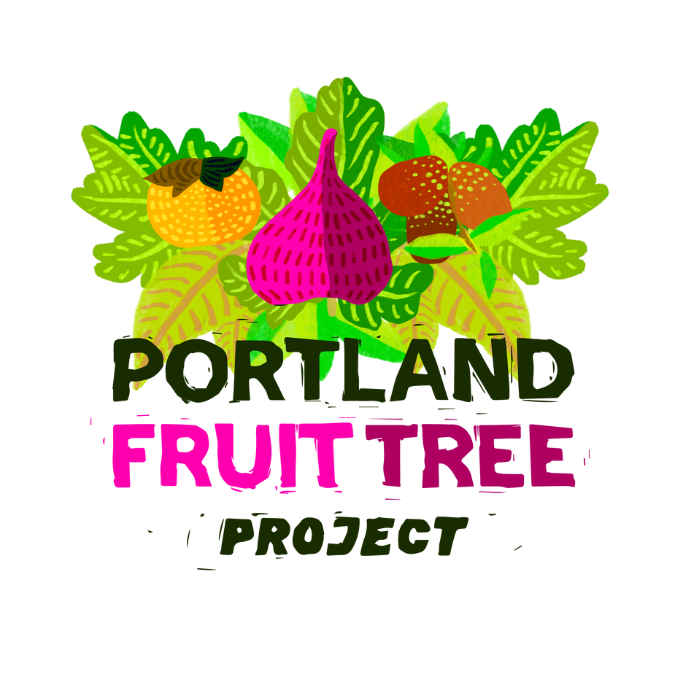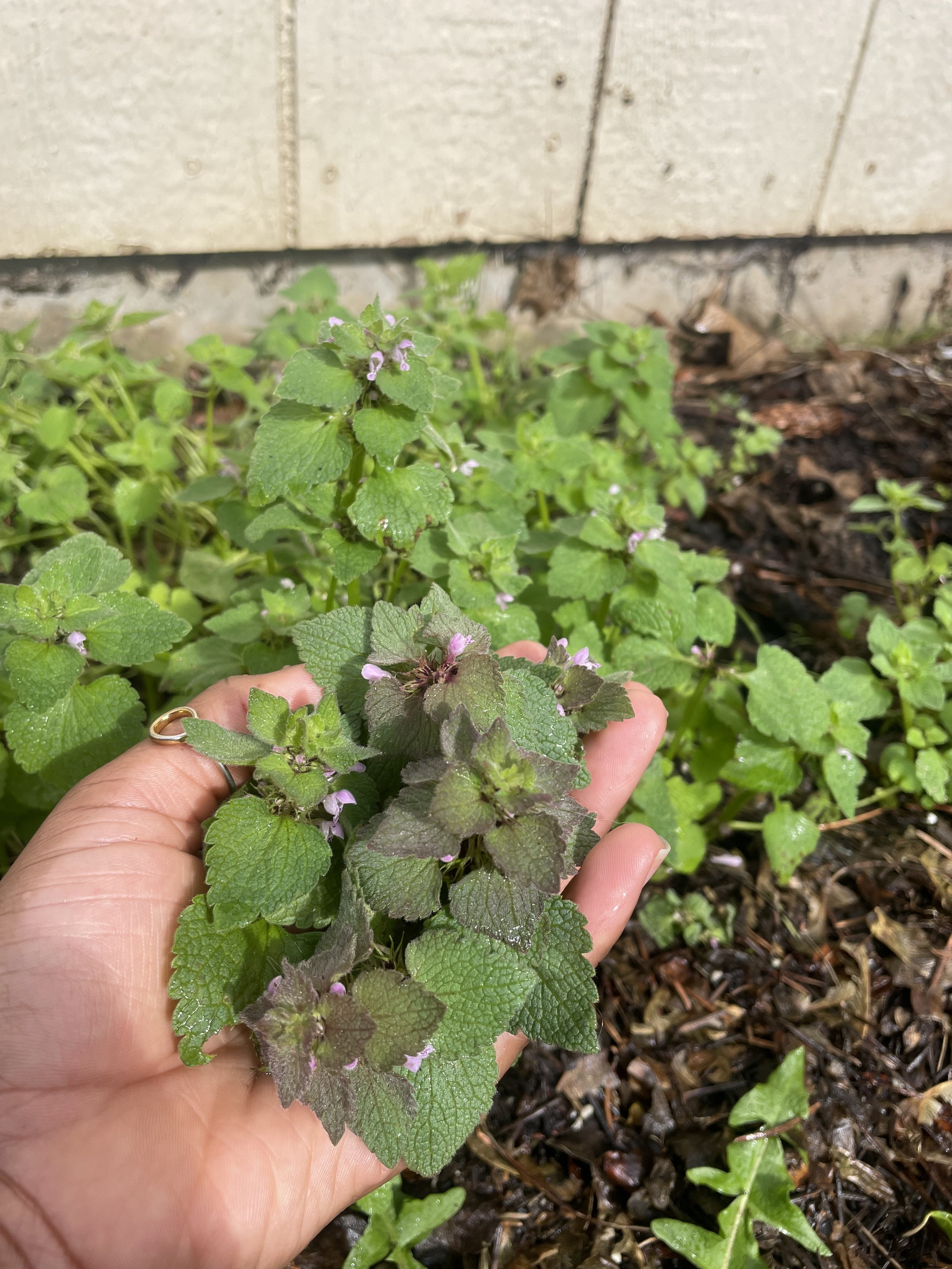Spring Foraging: Eats Right in Your Backyard
Post sponsored by Welcome to PDX Real Estate Agent, Deb
〰️
Post sponsored by Welcome to PDX Real Estate Agent, Deb 〰️
Happy Spring season from the team here at Portland Fruit Tree Project! It is the end of the long dark and damp cold. The earth is unfurling from her rest. Watching buds break, flowers unfurl and inhaling the sweet smell of spring beginning to fill the air never gets old. Gardeners everywhere started their seedlings three yesterday’s ago. But what about all of the plants popping up right in your backyard or down the street or on a cloudy walk through Forest Park? Let’s talk dandelion jelly, pickled magnolias, and purple dead nettle potato soup!
Purple Dead Nettle Potato Soup Recipe
One of my very first foraging experiences was eating the white part of the purple flowers from purple dead nettle and henbit with my little brother when we were kids. Also, eating mulberries off of street trees in Illinois that I thought were tree blackberries for an embarrassing amount of time. Anyway, I have always been very stoked on the idea that food just pops up in our front yards every single year while simultaneously perplexed that we have decided to wage war on said free, nutritionally dense food. The first weed meal I ever made was purple dead nettle potato soup. Purple dead nettle is one of the very first plants that pops up in spring. I always welcome the plant with gladness. It is part of the mint family donning the characteristic square stem, opposite leaves and the distinct shape of their purple flowers. It is packed full of nutrients and benefits such as anti-inflammatory, immune stimulating and antimicrobial properties. The leaves can be eaten raw in salads but are a bit fuzzy. I prefer to use the plant in place of spinach in soups. Gather your dead nettles from a location that isn’t close to a road taking just the flowering tops. Wash them thoroughly.
Ingredients
1-2 Cup(s) Purple Dead Nettles
4-5 gold yukon potatoes
2 tbsp of butter
8 cups stock of your choosing (I like a light veggie or chicken for this)
4-5 cloves OR a whole head of garlic (I live by medicinal hedonism)
1 large onion
1-2 tbsp of thyme
½ -1 tbsp of oregano
1 tbsp of sage
A splash of apple cider vinegar
A hint of honey
Salt and pepper to taste
optional : a little splash of white wine to deglaze, drizzle of garlic oil and chopped chives on top
Directions
Sautee your diced onions in a fat of your choosing on medium heat. I like butter.
Add your minced garlic and saute until it becomes aromatic
Add your aromatics (thyme and garlic) and saute for 30 seconds
Pour in your stock and bring to a boil
Add the cubed potatoes and bring down to a simmer
Add the rest of the seasonings to taste, cover and let simmer for 30 minutes or until potatoes are tender
Add your roughly thoroughly washed and roughly chopped purple dead nettle, and let simmer for 5-10 more minutes
Optional: Puree
This recipe is incredibly simple and so yummy. You can add any extra veggies you have on hand. I picked some kale, leeks and spring onions from my backyard to add to the soup this time. Carrots, celery and crispy bacon would also be great additions.
Dandelion Jelly Recipe
Dandelions get such a bad rep when they are literally balls of sunshine! They are packed with vitamins (A, C, E, K and B) and minerals such as calcium, sodium, magnesium and iron. They are edible right down to the root. They also have antibacterial, anti-inflammatory, cytotoxic, and diuretic properties. Dandelion jelly is an easy and delicious way to get these nutrients into your diet. I got this recipe from The Farmers Almanac. It makes 5 cups.
Ingredients
4 cups dandelion blossoms
2 tablespoons lemon juice
1 package of powdered fruit pectin
5 ½ cups of sugar
Directions
Rinse your dandelion blossoms, snip the green part holding them together and make a dandelion tea. Boil the petals in 8 cups of water for 3 minutes. Let the tea cool before straining, making sure to press the blossoms to get any extra liquid out.
Measure 3 cups of the dandelion tea and put in a large saucepan. Add 2 tablespoons of lemon juice and the package of fruit pectin. Bring the mixture to a boil and then add the sugar, stirring to incorporate. Continue stirring while the mixture boils for 2 ½ minutes.
Ladle your hot dandelion jelly into 4 hot sterilized jars leaving ¼ inch of headspace. Make sure to wipe off the rims of your jars before adding clean dry lids. Tighten the screw bands fingertip-tight.
There’s no tested recipe for safely canning dandelion jelly, since it’s not high acid like fruits, BUT you can freeze or store in your refrigerator!
This is such an easy way to incorporate some free nutritional density in your diet.
Pickled Magnolias Recipe
Magnolia’s are gracing the streets of Portland with their blooms as we speak. Magnolias are one of the most ancient flowering plants being almost exclusively pollinated by beetles. We love beetles. Magnolia flowers taste citrusy and a little spicy. They are great for pickling and taste like pickled ginger! I have put them on rice bowls, hot dogs and noodle soups. The recipe is super easy and delicious. I measured with my heart and I believe in yours.
Ingredients
Magnolia blossoms
Apple cider vinegar (or rice vinegar)
A bit of salt
A few peppercorn
A few whole cloves
A pinch of sugar
Water
Directions
Gather your magnolia blossoms avoiding any trees on busy streets and rinse gently to avoid bruising the petals.
Sterilize your mason jars and lids in a hot water bath and then set aside to dry on a towel while you prepare the pickling liquid.
Combine your water, apple cider vinegar, salt, peppercorns, cloves and sugar in a pot and bring to a boil. Adjust the seasoning mixture to your taste.
Pack your magnolia flowers into the jars layering them on top of each other gently to pack the jar as tight as possible.
Pour the hot mixture over the magnolias leaving ¼ inch at the top of the jar
Let the mixture sit for at least 24 hours and then you have pickled magnolias! Keep in the refrigerator and eat within a month.
We hope you’re exploring your neighborhood, connecting with your neighbors and trying out these super abundant and easy recipes!
Do you have questions or need help?
Check out the Home Orchard Education Center for workshops and more
Find articles and more with the Oregon State University Extension school
Take the next step with Portland Fruit Tree Project!
This content was generously supported by:
Are you interested in sponsoring Portland Fruit Tree Project content? Send us an email!








